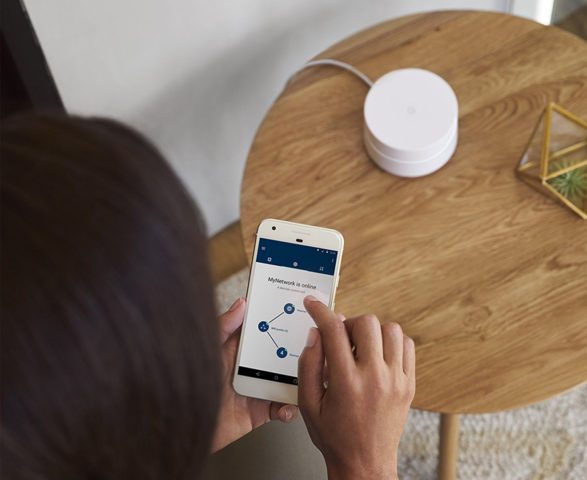When there are many users at home, and this is large with an elongated distribution or with several floors, you will have checked firsthand how complicated it is that the WiFi signal arrives in good conditions. We no longer refer to it coming in, but it is later usable in devices that demand a lot of flow like a television with streaming content or a console in the middle of Fortnite’s mission. More and more bandwidth is required at home and, in many cases, a simple router is not enough since not only because of the distance but also because of the allocation of resources, the connection is easy to saturate and some of the connected equipment come out losing.
Google surprised the world by introducing Google WiFi, a router that this corporation sells either individually or in a kit of 3 points connected ‘in-mesh’ and that made many customers focus their attention on this type of connection. The principle is simple; the main device is connected to the existing router by means of an ethernet cable, and then the rest of satellite devices in the points where there is more connection demand, especially if they are far from the router. An application will help the user to configure these ‘satellites’ and also to manage the network and the assignment of permits, something fundamental for families concerned about the use of the network by minors.

How exactly is it different from a conventional router? A WiFi network in-mesh is composed, as we have pointed out, of devices that ‘talk’ to each other and send information about the user that the connected devices are giving. In this way, the system operates intelligently and adapts in real time to the needs of the moment, avoiding cuts or decreases in speed at peak times. But perhaps the most appreciated feature by those who live in large houses, is that it is not necessary to connect to different nodes (those generated by signal repeaters) as they move through the house: the device connects to a single network and it is then the system that manages at what point it should receive the bandwidth optimally.
“The different ‘satellites’ can communicate with each other, which allows an intelligence in the network itself that can redirect traffic more optimally so that we do not necessarily connect to the nearest repeater”, explains Fernando Suárez, vice president of the Council General of Official Associations in Computer Engineering, “or dynamically distribute the connection based on the use that is made of it at all times; it is not the same to see a high-definition video through the Internet than browsing a web”, he states.
As we pointed out, the other great value of this type of devices is that they allow the user to transparently manage what happens in the network through an app on the mobile. You can establish rest hours in which the devices of minors are blocked at home; that is, by pausing the Internet at lunchtime or setting filters to prevent access to adult content.


